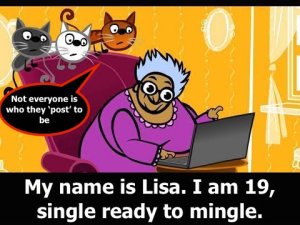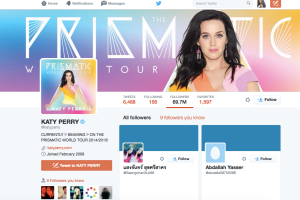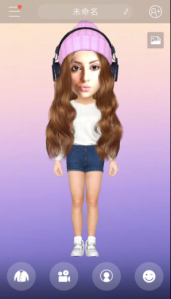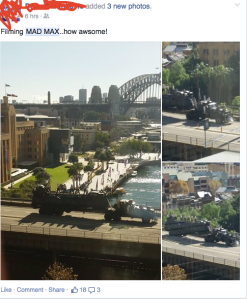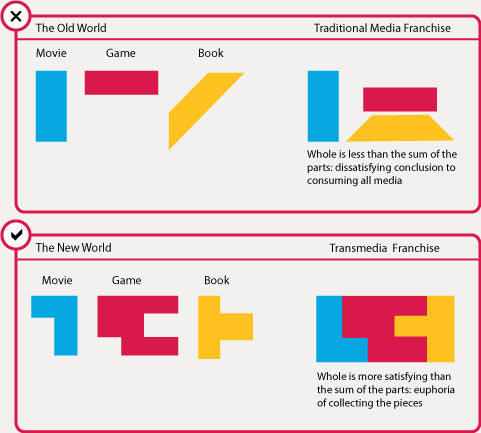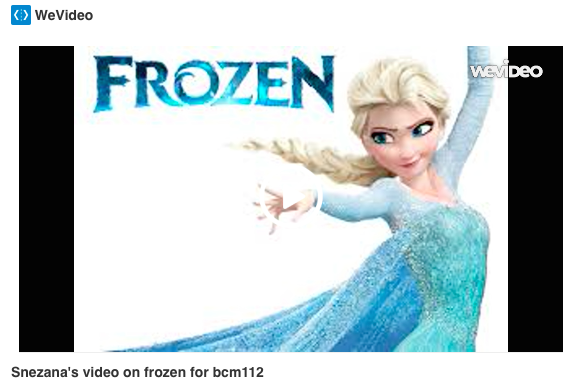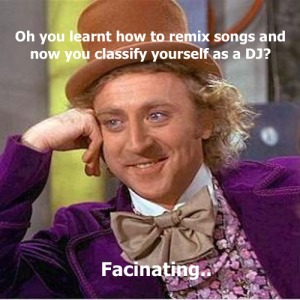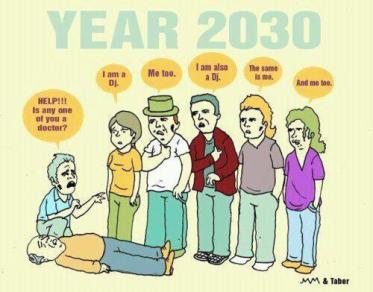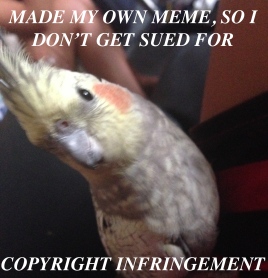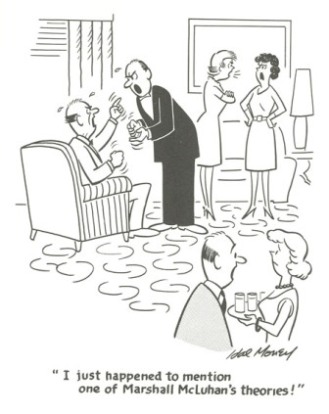Introduction
Mainstream media like television, radio and newspapers used to be the only sources of information in the pre Internet era. Audiences now have alternative options to accessing information because of the ongoing technological shift, known as media convergence. In this essay, I will analyze Pinterest, a smartphone app and website that allows the audience to “pin” their interests onto their personal profile as part of a compilation of their online identity. I will argue that media convergence plays an impact on the relationship between Pinterest and the audience. Due to media convergence, the Pinterest app and website allow the audience to have easy access to various content and participate in its creation. Pinterest has become successful within its purpose, but it’s copyright and privacy policy for users may be seen as a concerns.
Media convergence and Pinterest
Media convergence is defined by Henry Jenkins (2006) as “the flow of content across multiple media platforms, the cooperation between multiple media industries, and the migratory behavior of media audiences.”
This technological convergence has created a cultural shift from a state of:
Monologic media to dialogic media;
Passive consumption to active participation;
Dissemination to dialogue;
One to many to many to many;
Which empowers audiences to participate and contribute, disrupt, or join in a discussion. (Mitew, T 2015)
Media audiences nowadays play a crucial role in creating and distributing content on multiple media platforms, and convergence therefore is a word that manages to describe technological, industrial, cultural, and social changes within the society. An example of a media technology that plays a part of media convergence is Pinterest. Launched in March 2010, Pinterest allows the audience to converge from pinning on real life bulletin boards to bookmarking or pinning images to an online board that saves their collection of photos in different categories (Wong, Q 2015). This technological shift from physical materials to digital materials allows audiences to have easy access to content, which gains a relationship with media technologies like Pinterest.
Pinterest and audiences
Media convergence allows audiences to have easy access to media content by having a wide choice of devices to choose from. Due to media convergence, Pinterest has formed a relationship with audiences as it can be accessed from multiple devices and media platforms. For example, Pinterest can be accessed globally from any digital object with connection to the Internet, such as phones, computers and tablets. Also can be accessed from multiple media platforms such as Facebook, YouTube, Apps, Polyvore, blogs, and other websites. Pinterest links to other social media platforms by having a “Pin it” button, “follow me” button and Pin it Bookmarks which help audiences easily access Pinterest (Moritz, D 2012). Having such a large range of choices to choose from plays a role in Pinterest’s successful relationship with audiences. According to Internet research firm comScore (Ortutay, B 2015), the wide range of access to Pinterest has to led a significant increase of 79.3 million unique visitors in February (the latest data available), which is an increase of 47 percent since the year earlier. The choice of devices and media platforms audiences have for accessing the Internet is also giving users flexibility in how they would like to participate in the content.
Participation in online content, also known as a participatory culture, is a cultural aspect of media convergence. Participatory culture involves the way media consumers are able to annotate, comment on, remix, and otherwise influence culture in unprecedented ways (Lule, J 2012, p. 56). Pinterest is a prime example of participatory culture. The Pinterest website and App consists of a ubiquitous connectivity. The audience can create an online persona by publicly displaying their interests, creating cultural trends, communicating with people around the world and following other people with similar interests (Wong, Q 2015). With the new messaging feature launched in 2014, audiences are able to communicate with other users on Pinterest around their favorite Pins without having to leave the site or app (Lawler, R 2014). The evolution of media convergence has created an ongoing, constant and participative connection between Pinterest and audiences, which has helped Pinterest gain a positive relationship with audiences.
The remix and remediate aspect of participatory culture also plays a role in the relationship between Pinterest and audiences. Remix culture is “a society that allows and encourages derivative works by combining or editing existing materials to produce a new product” (Davies, H 2013). A remix culture would be, by default, permissive of efforts to improve upon, change, integrate, or otherwise remix the work of copyright holders. Remixing and remediating both has strengths and weaknesses when focusing on the relationship between Pinterest and audiences.
Remediating shifts passive consumption to active participation, which involves user-created content. Pinterest mainly involves digital photos, which are a popular type of user-generated content, especially with the ubiquity of smartphones and social apps (Statista, 2013). Pinterest permits audiences to become participants by allowing them to upload their own creative work, “re-pin” other digital photos to save onto their board, customize their layout and boards the way they like it and get ideas from other Pinterest users to create innovative objects. This shows another aspect of Pinterest’s successful relationship with audiences due to media convergence. However, like in any case of media interaction, remix culture can lead to legal concerns so fair use and copyright infringement conditions need to be considered.
Media convergence can play a negative role in terms of audience violation for copyright on media platforms. Copyright was designed in the 18th century as a right limited in scope and duration to ensure that culturally important creative works were not the victims of monopolies and were free “to promote the progress” (Collins, S 2008). The Internet, digital media and file-sharing networks have thrust copyright law under public scrutiny, provoking discourses questioning what is fair in the digital age. Because audiences on social media platforms like Pinterest can control and generate content, this affects the relationship between Pinterest and audiences, also raises concerns whether Pinterest violates image licenses and audiences are breaking copyright by reusing images without the owners permission.
Pinterest’s Terms Of Use prohibit its members from posting copyrighted material without the copyright holder’s permission.
“you represent and warrant that: (i) you either are the sole and exclusive owner of all Member Content that you make available through the Site, Application and Services or you have all rights, licenses, consents and releases that are necessary to grant to Cold Brew Labs the rights in such Member Content, as contemplated under these Terms; and (ii) neither the Member Content nor your posting, uploading, publication, submission or transmittal of the Member Content or Cold Brew Labs’ use of the Member Content (or any portion thereof) on, through or by means of the Site, Application and the Services will infringe, misappropriate or violate a third party’s patent, copyright, trademark, trade secret, moral rights or other proprietary or intellectual property rights, or rights of publicity or privacy…” (Lamb, N 2012).
However, audiences often pin and re-pin images without paying attention to the terms of use or giving credit to the owner of the content. Audiences also discover images from other media platforms and upload them on Pinterest so they can share with others. These posts then have a very likely chance to go viral by having others repining. A case study that involves Pinterest having weak copyright policy is the Christopher Boffoli’s photographs being used without permission case. Christopher Boffoli, who is a Seattle-based fine art photographer, sued Pinterest for infringing upon his copyrights and other intellectual property rights. Christopher Boffoli claims that his photographs have been posted over 5,000 times on the public site, and that Pinterest isn’t doing enough to “protect photographers and their work” (Archambault, M 2015). Christopher’s artwork was being used without permission, which weakens Pinterest successful relationship with audiences and raises concerns with its copyright policy.
Conclusion
It’s evident that media convergence plays a positive but also negative impact on the relationship between Pinterest and audiences. The fact that Pinterest can be accessed from multiple media devices and media platforms, allows audiences to be a part of a participatory culture; be able to comment on, generate own content and have an active participation, all show a positive aspect on how media convergence has led to a positive and successful relationship between Pinterest and audiences. However, the flexibility of Pinterest raises concerns whether Pinning violates image licenses and breaks copyright.
In the Christopher Boffoli case study, I believe Christoper should’ve been aware of the fact that others would have reused his photographs as they’re publicly displaced on the Interest, but Pinterest should make their Terms of Use more clear. If audience’s content continues to be reused by others without permission, slowly artists, photographers and others using Pinterest will think twice about uploading their work on Pinterest. This would disadvantage Pinterest’s purpose and significantly weaken Pinterest’s relationship with audiences.
Bibliography:
Archambault, M 2015, ‘Photographer Suing Pinterest in Federal Court Over Repeated Copyright Infringement’, Peta Pixel, 27 May 2015, viewed on 1 June 2015, < http://petapixel.com/2015/05/27/photographer-suing-pinterest-in-federal-court-over-repeated-copyright-infringement/>
Collins, S 2008, ‘Recovering Fair Use’, MC Journal: A Journal of Media And Culture, vol. 11 no. 6, viewed 30 May 2015, <http://journal.media-culture.org.au/index.php/mcjournal/article/viewArticle/105>
Davis, H 2013, ‘What is Remix?’ Re:mix Culture’, weblog post, 11 March 2013, viewed on 1 June 2015, <http://unmixable.blogspot.com.au/2013/03/what-is-remix.html>
Jenkins, H 2006, ‘Convergence Culture: Where Old and New Media Collide’. New York: New York University Press, p. 282.
Lamb, N 2012, ‘Will extensive terms and conditions make you un Pinterest?’ Xposure Marketing Brands, 20 March 2012, viewed on 3 June 2015, < https://xposurecreative.uk/will-extensive-terms-and-conditions-make-you-un-pinterested/>
Lawler, R 2014, ‘Pinterest Rolls Out Messaging So Pinners Can Have Conversations Around Shared Pins’, Tech Crunch, 6 August 2014, viewed on 3 June 2015, < http://techcrunch.com/2014/08/06/pinterest-messaging/>
Lule, J 2013, ‘Chapter 1: Media and Culture’, Digital Media Literacy, Howard University.
Mitew, T 2015, ‘Will you be my audience? Empowerment, access and participation across media platforms’, lecture presentation, BCM112, University of Wollongong, viewed 2 June 2015, < https://prezi.com/jxq_2muer3ea/will-you-be-my-audience-bcm112/>
Moritz, D 2012, ‘The 10 Commandments of Using Pinterest for Business’, Amy Porterfield, 5 June 2012, viewed on 3 June 2015, < http://www.amyporterfield.com/2012/06/the-10-commandments-of-using-pinterest-for-business/>
Ortutay, B 2015, ‘Pinterest drawing wider audience; $11 billion social-media hub hopes to corner market on brainstorming’ The Columbus Dispatch, 6 April, viewed on 3 June 2015, <http://www.dispatch.com/content/stories/business/2015/04/06/this-pinup-has-legs.html>
Statista, 2013, ‘Statistics and facts about User-generated Content in the U.S’, The Statistics Portal, February 2013, viewed on 2 June 2015, <http://www.statista.com/topics/1716/user-generated-content/>
Wong, Q 2015, ‘Pinterest to launch ‘buyable pins’ for easy purchases’, San Jose Mercury News, 2 June, viewed on 3 June 2015, <http://www.mercurynews.com/business/ci_28235673/pinterest-launch-buyable-pins-facilitate-purchases-social-network>

